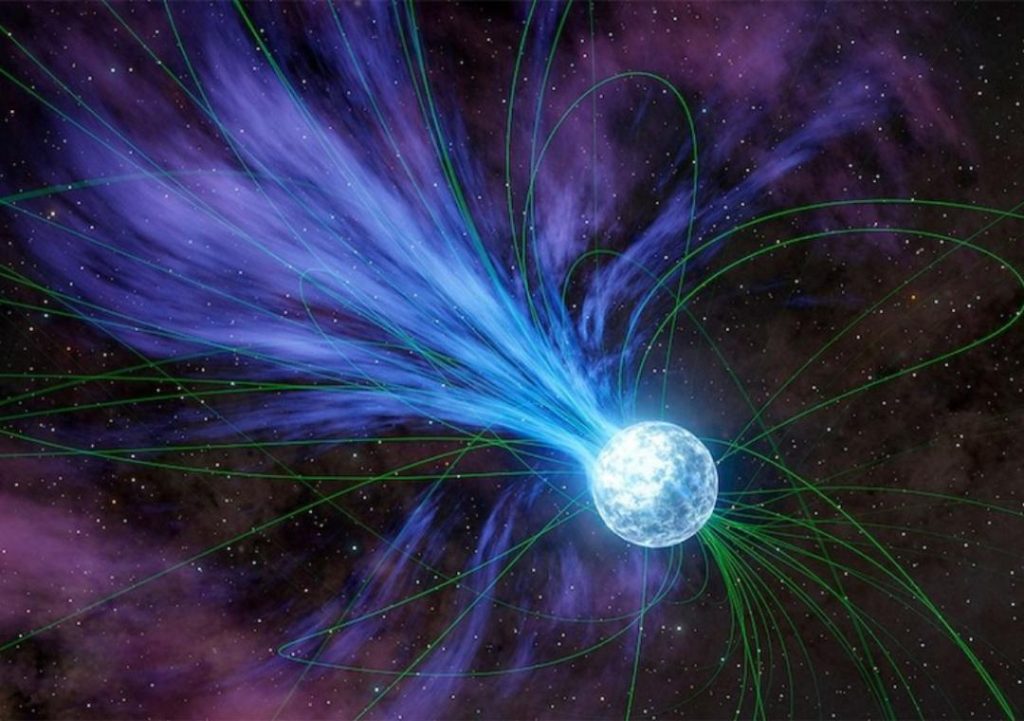
Gold & Platinum Created through Neutron Stars’ Explosions: Study
For centuries, humans have been fascinated by the origins of precious metals like gold and platinum. These valuable elements have been the subject of much speculation, with many theories attempting to explain how they came to be. Recently, a groundbreaking study led by Columbia University student Anirudh Patel has shed new light on the origins of these precious metals, revealing that they were created through the explosions of magnetars, or highly magnetized neutron stars.
According to the study, these magnetars exploded and released flares that contained the elements gold and platinum. This cosmic event occurred over 20 years ago, and its impact on our understanding of the universe is significant. The discovery has sparked renewed interest in the field of astrophysics, as scientists continue to uncover the secrets of the universe.
But how did the researchers come to this conclusion? To understand the origins of gold and platinum, it is essential to first understand the process of nucleosynthesis. Nucleosynthesis is the process by which atomic nuclei are created through the fusion of lighter elements. This process occurs in the hearts of stars, where the intense heat and pressure cause the nuclei to combine, resulting in the creation of heavier elements.
In the case of gold and platinum, the process of nucleosynthesis is more complex. These elements are created through the rapid capture of neutrons by atomic nuclei, a process known as rapid neutron capture or r-process nucleosynthesis. This process occurs in the extreme environments of neutron star mergers and supernovae explosions.
The study led by Patel used data from NASA’s Fermi Gamma-Ray Space Telescope to detect the presence of gold and platinum in the explosion of a magnetar. The researchers analyzed the data and found that the explosion had released a significant amount of energy in the form of gamma rays, which contained the elements gold and platinum.
The discovery of gold and platinum in the explosion of a magnetar is significant because it provides evidence of the role of neutron stars in the creation of these elements. Neutron stars are incredibly dense objects that are formed when a massive star undergoes a supernova explosion. They are characterized by their intense magnetic fields, which can be thousands of times stronger than those found on Earth.
Magnetars, in particular, are a type of neutron star that is characterized by its extremely strong magnetic field. These objects are thought to be responsible for the most powerful explosions in the universe, releasing enormous amounts of energy in the form of gamma rays and X-rays.
The study’s findings have significant implications for our understanding of the universe. The discovery of gold and platinum in the explosion of a magnetar provides evidence of the role of neutron stars in the creation of these elements. This, in turn, sheds new light on the origins of the universe and the processes that govern its evolution.
But how common are these events? According to the researchers, magnetars explode approximately once per decade in the Milky Way galaxy. However, across the observable universe, these explosions occur annually. This means that the creation of gold and platinum through the explosions of magnetars is a relatively common occurrence, providing a new source of these precious metals.
The discovery of gold and platinum in the explosion of a magnetar has significant implications for the field of astrophysics. It provides evidence of the role of neutron stars in the creation of these elements and sheds new light on the origins of the universe. The study’s findings also have significant implications for our understanding of the processes that govern the evolution of the universe.
In conclusion, the study led by Columbia University student Anirudh Patel has shed new light on the origins of precious metals like gold and platinum. The discovery of these elements in the explosion of a magnetar provides evidence of the role of neutron stars in their creation and sheds new light on the origins of the universe. The study’s findings have significant implications for our understanding of the universe and the processes that govern its evolution.






